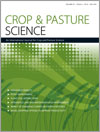
Crop and Pasture Science
Volume 67 Number 6 2016
CP15107Contribution of apigenin di-C-glycosides and lutein to the colour of yellow alkaline noodles
CP15206Application of prognostic breeding in maize
Prognostic breeding is a crop-improvement methodology that utilizes the plant prognostic equation to maximise selection efficiency, increase the precision of field phenotyping, and select plants with high and stable crop yield potential. Application of prognostic breeding in maize started in the F2 of the hybrid Costanza and was effective in selecting superior lines that averaged 87–91% of Costanza’s productivity. The average annual genetic gain ranged from 23% to 36%.
CP15271Effect of Fe3O4 nanoparticles and iron chelate on the antioxidant capacity and nutritional value of soil-cultivated maize (Zea mays) plants
CP15257Competition and growth of a grass–legume mixture fertilised with nitrogen and phosphorus: effect on nutrient acquisition, root morphology and symbiosis with soil microorganisms
CP15278Nitrogen fertiliser requirements of high-yielding irrigated transgenic cotton
CP15333Single independent genes confer resistance to faba bean rust (Uromyces viciae-fabae) in the current Australian cultivar Doza and a central European line Ac1655
CP15204Physiological and molecular characterisation of lucerne (Medicago sativa L.) germplasm with improved seedling freezing tolerance
CP15289Autumn dormancy regulates the expression of cas18, vsp and corF genes during cold acclimation of lucerne (Medicago sativa L.)
This study mainly examined the influence of four autumn-dormancy categories on cas18, vsp and corF gene transcripts during the first year of lucerne establishment. Results showed that the level of transcripts of cas18, vsp and corF in dormant cultivars were markedly higher than in other autumn-dormancy categories cultivars. These results indicate that autumn dormancy are likely to have significant consequences on lucerne productivity and its long-term persistence.
CP15337Control of water leakage from below the root zone by summer-active pastures is associated with persistence, density and deep rootedness
Temperate pastures that leak water below the root zone have been linked to an increase in dryland salinity. We compared soil water beneath eight pasture types in a 5-year grazed field study. Pasture characteristics for control of leakage included summer activity, deep rootedness, and persistence at high plant densities under grazing; only lucerne satisfied all these criteria.



